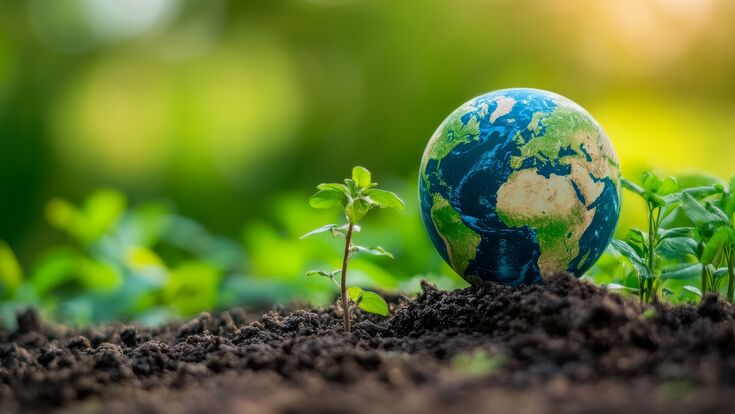Biowaste : Earth Day Spotlight: Austria leads in organic waste separation—but the work isn’t done

As Earth Day approaches on April 22, the international community turns its attention once again to the pressing need for sustainable living. This year’s theme, “You Make the Difference,” is a timely reminder that individual habits can drive meaningful environmental change. Nowhere is this more evident than in Austria, where a recent survey shows that 74% of the population report separating their organic waste—turning everyday kitchen and garden scraps into powerful agents of climate protection and soil regeneration.
But while Austria shows promise, the numbers also reveal a tale of two realities. In the alpine regions of Tyrol and Vorarlberg, participation in organic waste separation soars to 88%. In stark contrast, urban Vienna lags at just 40%, underscoring the challenges cities face in mobilizing citizens for decentralized environmental action.
From bin to biogas: Why organic waste matters
Biowaste—comprising biodegradable fractions of municipal solid waste such as kitchen scraps, garden cuttings, and other compostable organics—represents a critical feedstock in the circular bioeconomy. When effectively source-separated and processed via aerobic or anaerobic pathways, these materials yield high-quality compost, which enhances soil structure, improves water retention, and replenishes organic carbon. Additionally, anaerobic digestion of organic waste generates biogas—a renewable energy carrier that can be upgraded to biomethane or used for combined heat and power (CHP) production, contributing directly to decarbonization goals and energy resilience.
“Biowaste is an underutilized but strategically important resource for both agriculture and energy sectors,” notes Gabriele Jüly, President of the Association of Austrian Waste Management Companies (VOEB). “Its recovery supports regenerative soil management and offsets fossil fuel use.”
Yet despite its value, Austria still diverts approximately 680,000 tonnes of biogenic waste annually into the residual waste stream, where it is incinerated rather than valorized. This loss underscores the urgent need for improved source separation, optimized collection logistics, and broader public engagement to fully realize the environmental and economic potential of biowaste.
Biowaste is an underutilized but strategically important resource for both agriculture and energy sectors.Gabriele Jüly, VOEB
The 4-Bin Model: Making recycling easy
To combat this, VOEB is advocating for a nationwide rollout of the “4-bin principle.” The model assigns households and residential complexes with four distinct bins: one each for residual waste, paper, packaging, and organic waste. According to the survey, 84% of Austrians support this initiative, believing it would simplify waste separation and encourage participation.
Education also plays a critical role. Misunderstandings about what constitutes biowaste, or the presence of compost-incompatible items like plastic bags, continue to hamper efficient collection. Jüly emphasizes the importance of proper pre-collection techniques—such as storing food scraps in ventilated containers emptied every few days—to reduce odor and improve recycling outcomes.
Learning from leaders: Biowaste management across Europe
Austria is not alone in advancing organic waste recycling. Countries like Italy and Germany offer compelling models. Italy’s Emilia-Romagna region, for instance, boasts one of the highest rates of food waste recycling in Europe, thanks to a door-to-door collection system and strong public engagement. In Milan, the introduction of mandatory biowaste separation in 2012 helped reduce residual waste by over 30% within just a few years.
Germany, too, has a long-standing reputation for environmental discipline. Over 60% of German households participate in biowaste separation, and the country operates hundreds of composting and anaerobic digestion plants. As of 2015, the separation of organic waste became mandatory across all municipalities—providing a legislative backbone for widespread adoption.
Scandinavian nations like Sweden and Norway have gone a step further by integrating food waste into district heating and electricity grids through anaerobic digestion. Sweden, for instance, recycles nearly 50% of its household food waste into biogas or compost, helping power public transport and heat homes during long winters.
Rethinking food waste—An Earth Day imperative
This Earth Day, VOEB is drawing attention to the staggering amount of unused food discarded around Easter—a seasonal spike in waste that reflects a broader issue. Although 64% of Austrians say they are mindful of food use, millions of eggs and fresh produce still end up in the trash. In Tyrol and Vorarlberg, where composting is culturally embedded, up to 64% of residents compost in their own backyards—turning food scraps into local nourishment for the land.
Across Europe and beyond, biowaste recycling is proving to be a potent tool for climate action, resource conservation, and public engagement. Yet even in high-performing countries like Austria, significant regional disparities and behavioral gaps remain.
The path forward: Local action, global impact
As we mark Earth Day 2025, the message is clear: sustainable systems begin with informed individuals and accessible infrastructure. The promise of biowaste recycling is immense—richer soils, reduced emissions, and cleaner energy—but it hinges on consistent public participation and smart policy support.
“A separate organic waste bin in every household is a simple but powerful step,” says Jüly. “The more we separate, the more we save—our soil, our climate, and our shared future.”
On a day dedicated to the planet, that’s a difference we can all make.


